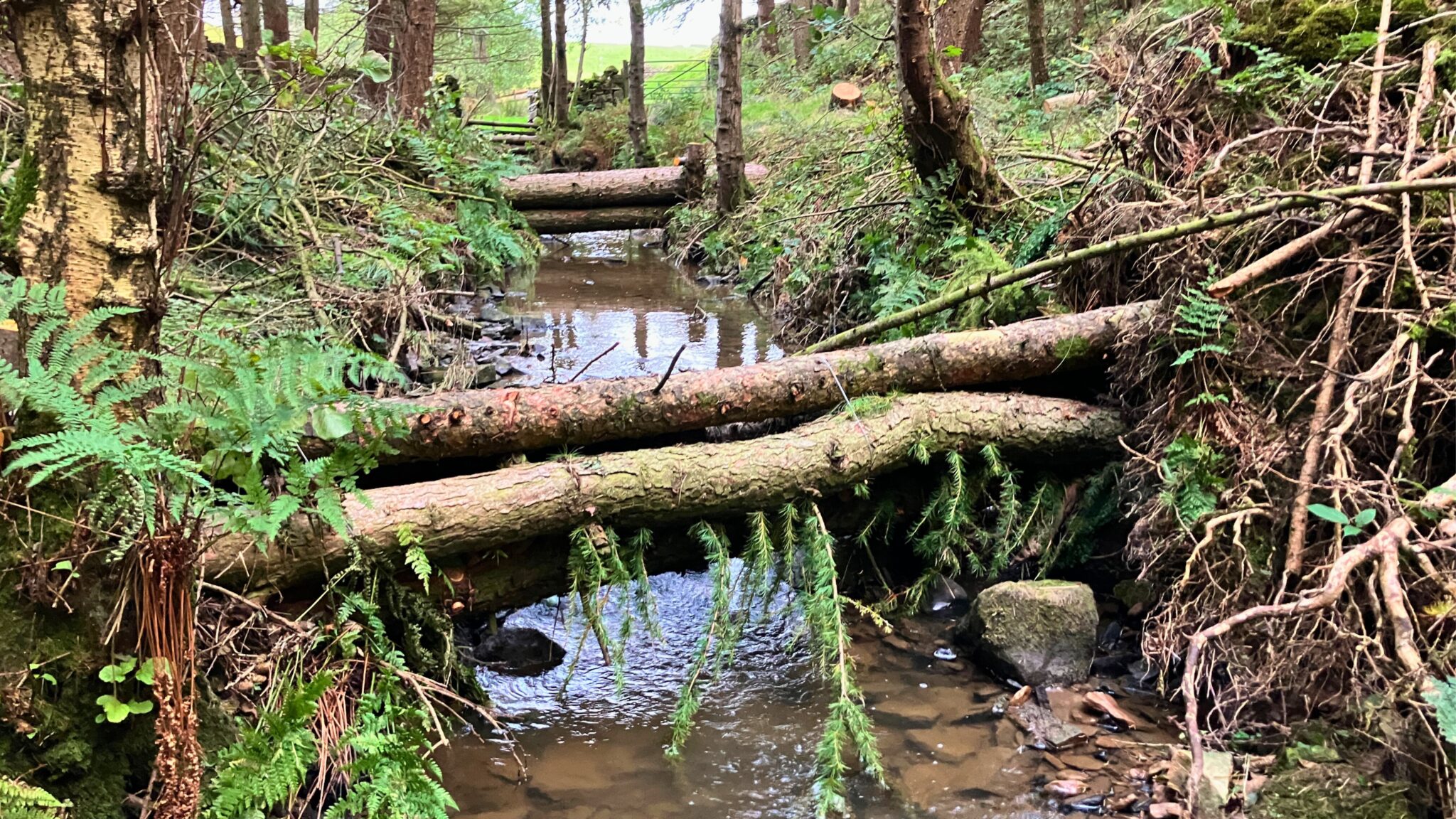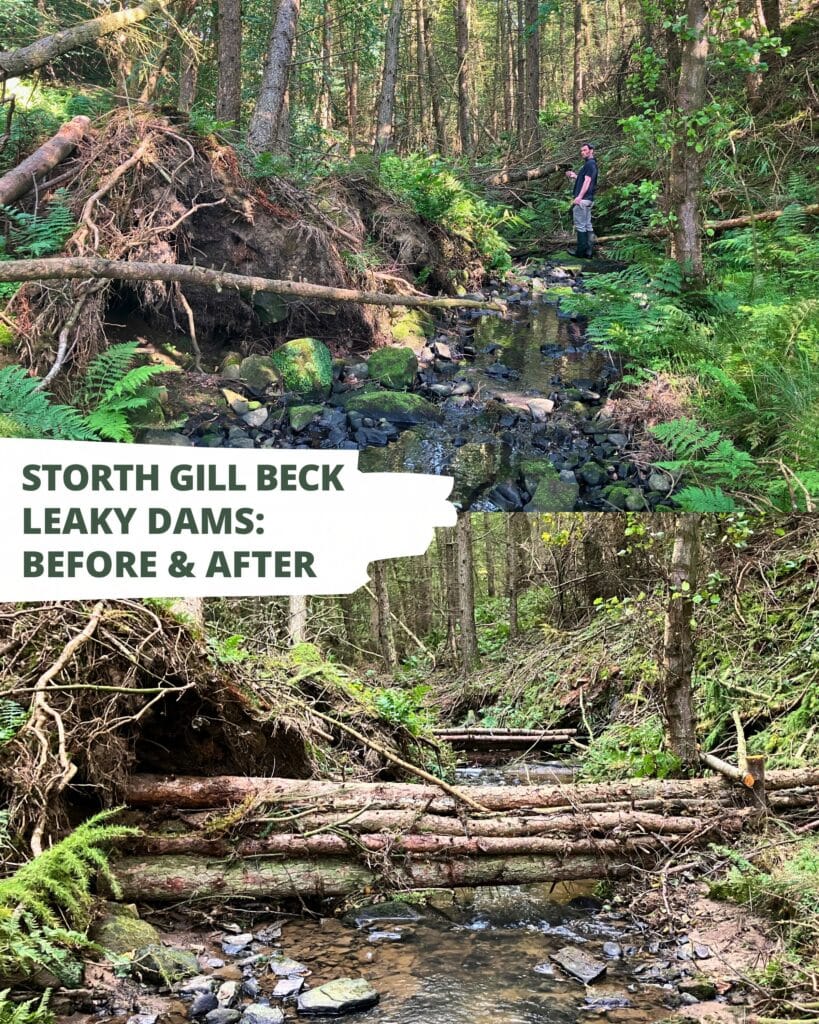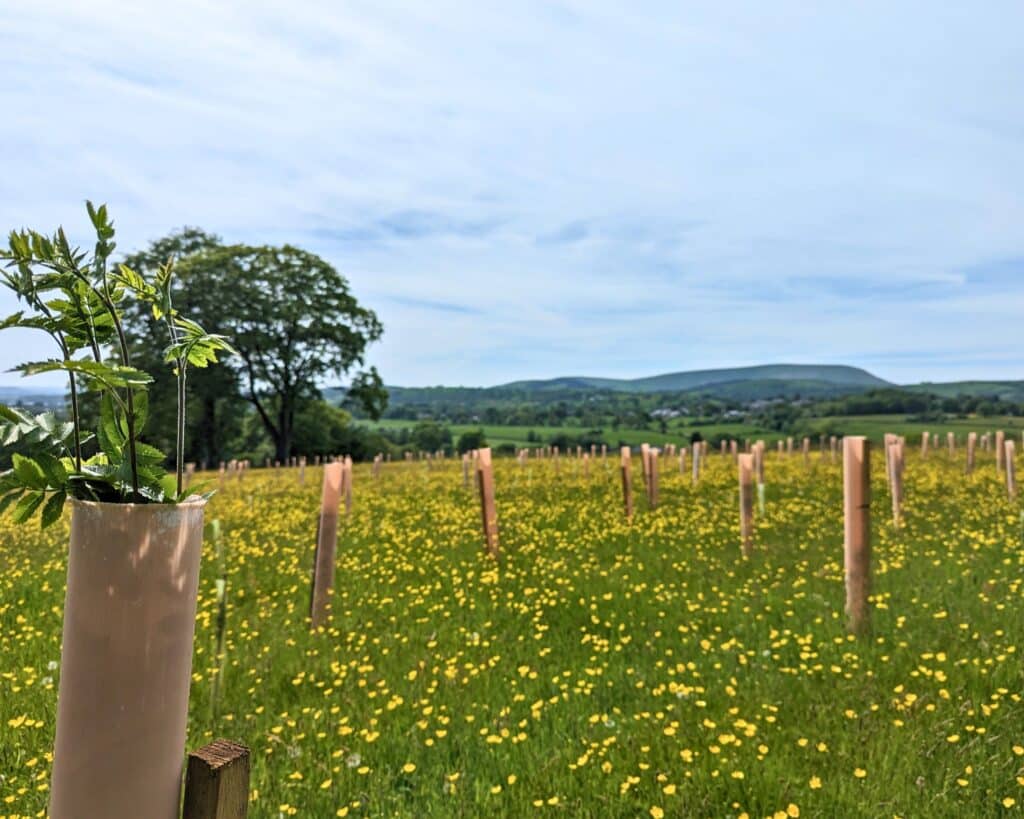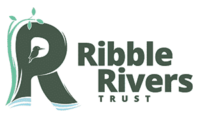
What is a leaky dam?
You might have heard us mention leaky dams before, but what exactly is a leaky dam? First and foremost, leaky dams are nothing like the old mill dams that we spend so much time removing or modifying. They’re also different from the dams that are used for hydroelectricity.
So, what is a leaky dam?
The key feature of a leaky dam is that they sit above the river instead of on the riverbed. This means that fish and other river dwelling creatures can move under the structures as normal. No matter what the river is doing, or how fast it’s flowing, if there is water in the river, fish can always get under the dam.

Leaky dams only function when the river starts to rise. When this happens, the excess water hits the leaky dam and the leaky dam then holds this excess water back and pushes it out to the side. So, instead of flooding the properties downstream, the land around the leaky dams floods. Once river levels start to drop, this excess water will start to drain away slowly. This helps to reduce flood peaks and create a steadier, less destructive, flow.
This is known as Natural Flood Management (NFM). It simply means using natural processes to regulate water flow and reduce flood risk. There are many diverse types of NFM strategies which are all slightly different. However, they all have something in common; they all have reconnecting and renaturalising river systems at their core.
How do you make a leaky dam?
Wherever possible we try and use locally sourced wood straight from the riverbank. But crucially, instead of chopping the trees down, we cut part way through the trunk and pushed them over. These are known as hinged trees. Despite being on their side, these trees will continue to grow, and the tree should start to regrow from the stump too.
When we do have to cut whole trees down, we try to use willow. Again, this species will regrow from the stump, trunk, and even tiny branches.
Usually, we try and use the other trees, boulders, and naturally occurring features to secure the hinged trees. When this isn’t possible, we’ll try to use wooden posts driven into the banks or thick natural rope to secure the dams. Eventually, the dams will start to secure themselves as the hinged trees regrow and gather silt from the flood water, which will help secure the structure further.
Isn’t this what beavers do?
Beavers are the masters of leaky dam creation! These clever creatures build dams to protect themselves from predators. However, they don’t live in the dams themselves, they live in lodges within the deep pools that their dams create.
Sadly, Lancashire has one of the lowest levels of woodland cover in the country, so there aren’t many spaces that are large enough to accommodate them. However, we’re hoping that this will change one day. Each year we plant tens of thousands of trees across the Ribble Catchment, and maybe in the future, one of these woodlands will be home to beavers!


Rivers are at the heart of our local landscapes. Whether you’re casting a line, exploring a riverside trail, or simply basking in the beauty of nature, you can help protect these special places now, and for generations to come.
By becoming a Ribble Rivers Trust supporter for just £3 a month, you’ll be funding real, on-the-ground action.
Ready to make a difference? Learn more here: ribbletrust.org.uk/become-a-supporter

